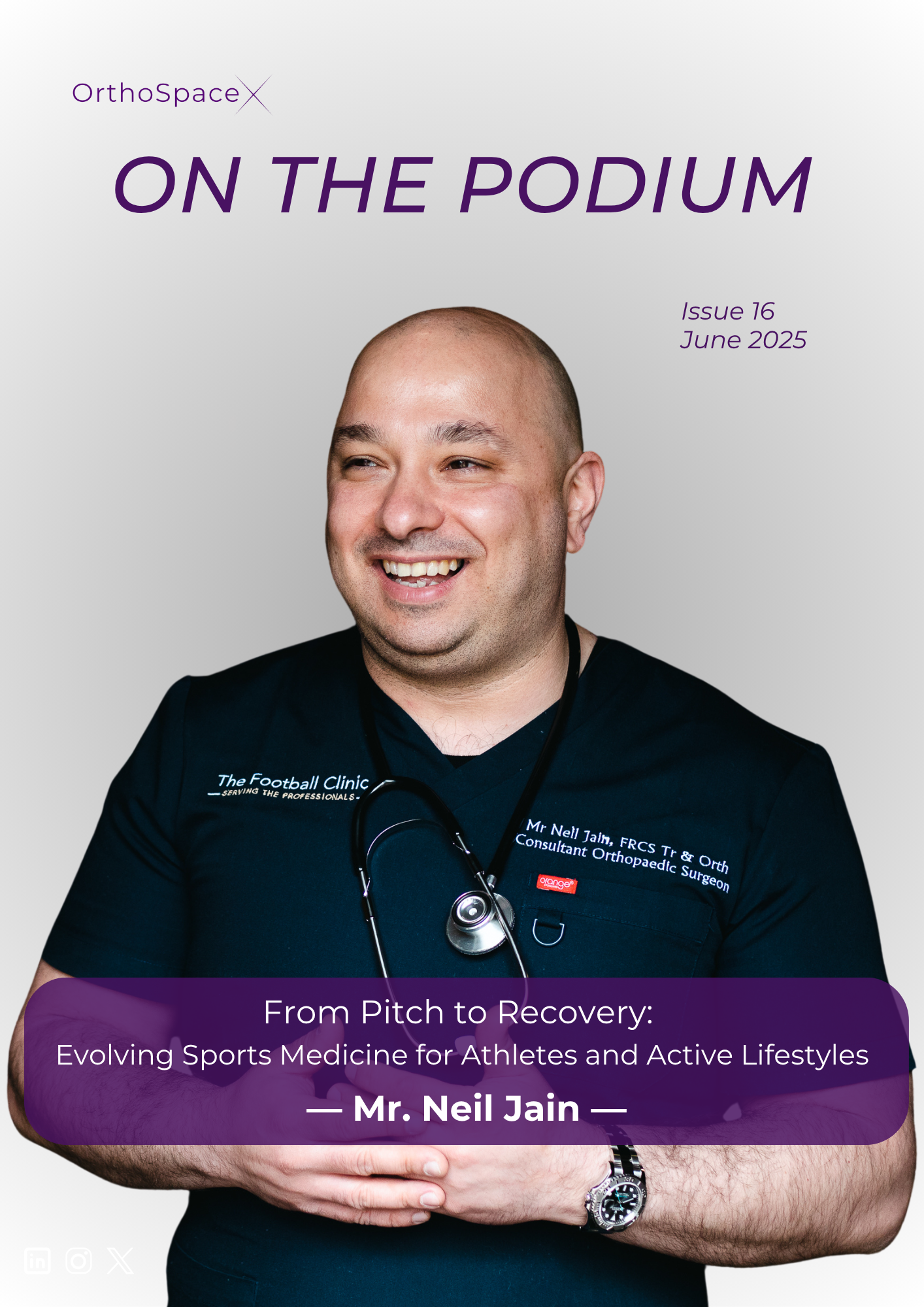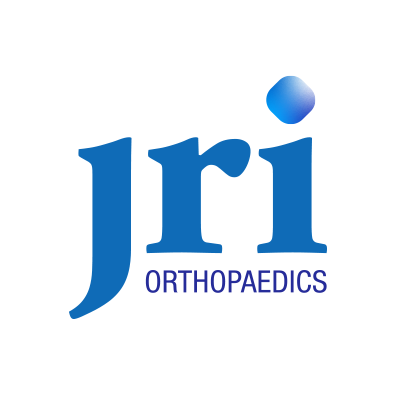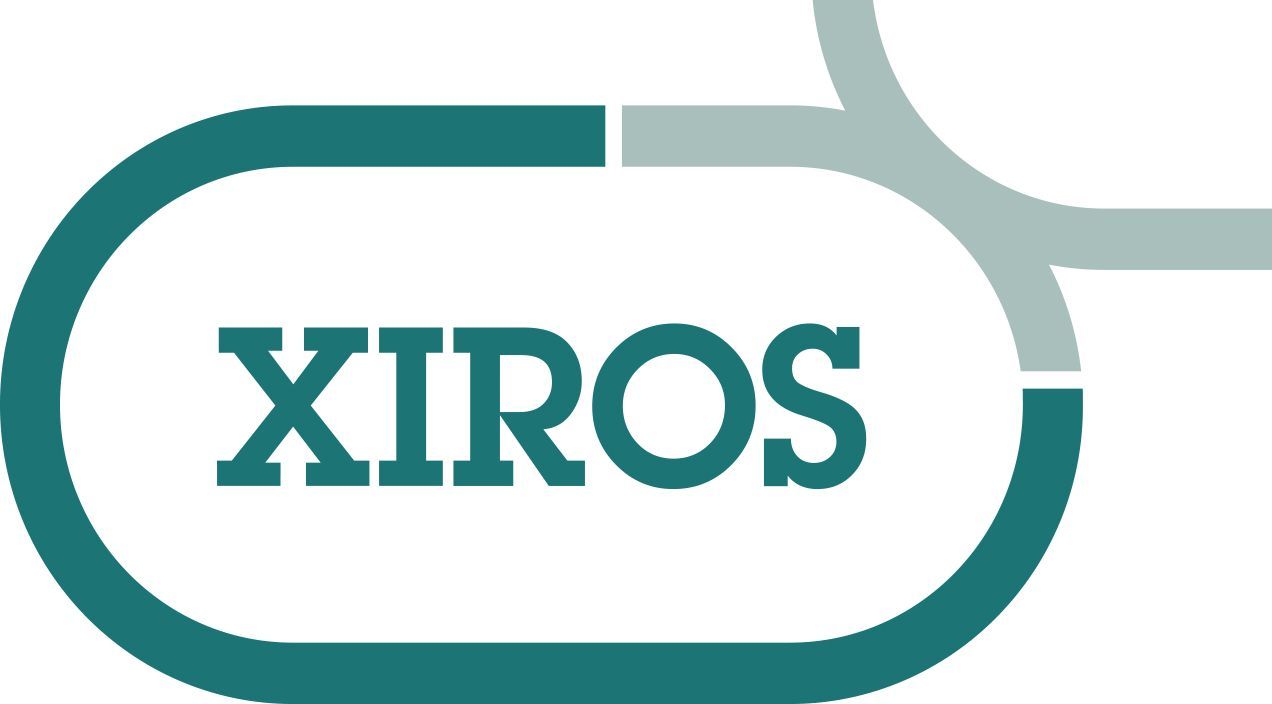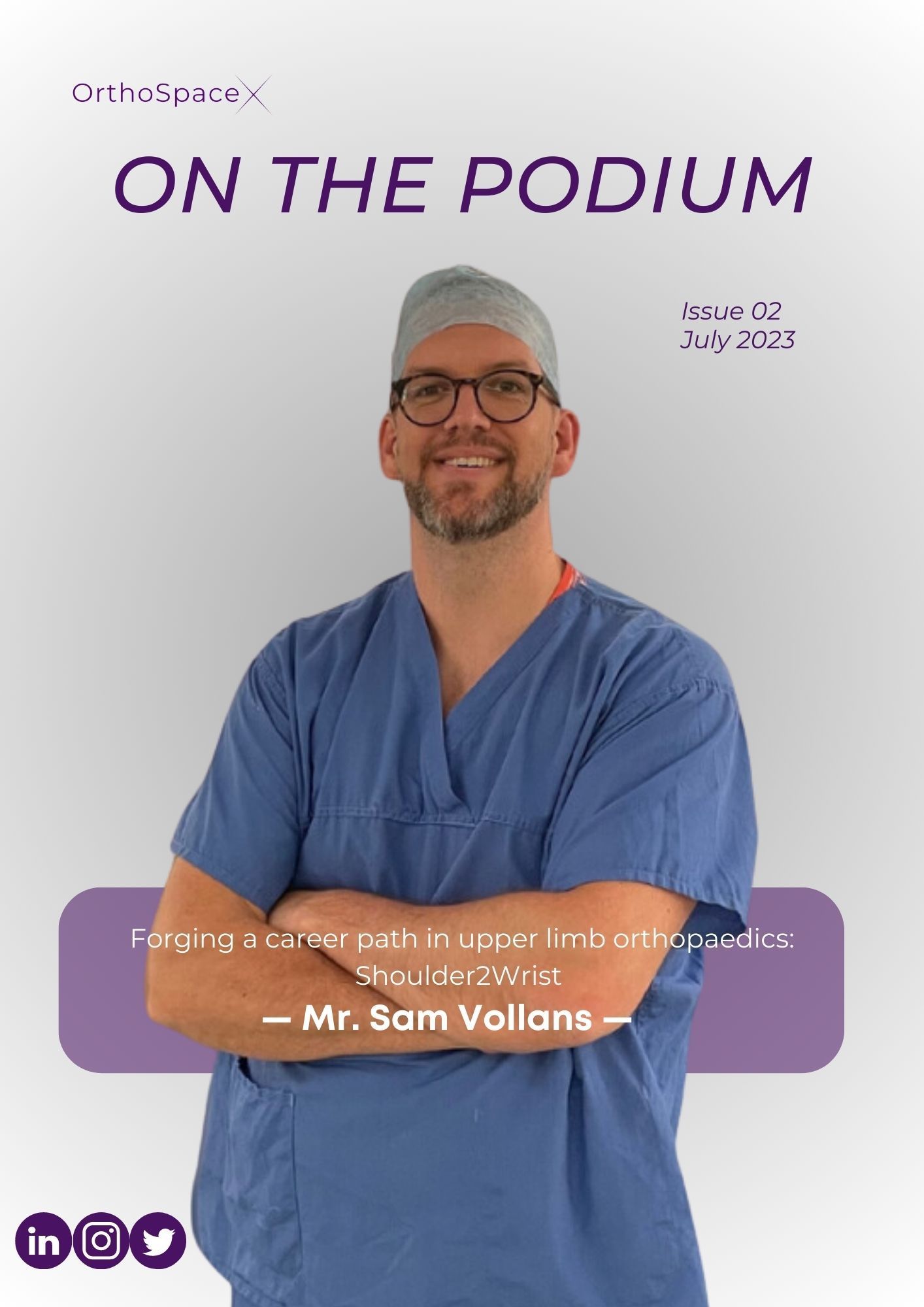From Pitch to Recovery
Evolving Sports Medicine for Athletes and Active Lifestyles
— Mr. Neil Jain —
Issue 16, June 2025
What inspired you to specialise in sports injuries and orthopaedic surgery? Was there a particular moment or experience that solidified your decision?
To be fair I was inspired when I injured my own knee. I will never forget playing football one day and suffering an injury to my knee. I underwent surgery by Prof David Barrett in Southampton and anyone who’s met him will know how charismatic he is. So that was an important moment in my life for so many reason and Prof Barrett was definitely and inspiration. I always wanted to work in sport and when it was clear that I would never be good enough to compete at a high level in sport I had to find another way. So this was an option and it seemed to be a decent way to earn a living too! Along the way each step has solidified the decision, I have been extremely lucky to have moments that happen and build to the next one, thankfully they continue. In terms of a most significant or impactful thing that I have done in my career though. To be honest, I think the most impactful thing in my career was my work as a junior doctor in breast cancer surgery. We invented and developed an outcome measure for wide local excision of breast cancer and, of course, that is a more life-threatening disease than anything I currently deal with. Sport is important, but life is so much more.
You’ve worked with various elite sports clubs on a professional basis and with many professional athletes. Does your treatment of these individuals change compared to the treatment of other sports people who maybe are not professional?
Essentially, my treatment is no different. Whoever the patient may be, you want to do your best for them. So from a technical surgical perspective, as a surgeon, one always naturally wants to deliver the best surgery possible. What may be different is the expectation of the patient. An athlete is focused solely on returning to the same level of sport, if not higher. The recreational athlete may have to consider normal life events like work and family and prioritise those ahead of returning to sport — and that’s normal. So essentially the surgery is no different, but the consultation and discussion are important in managing expectations in a bespoke fashion so that you do your best to get it right for every patient and their specific needs on every occasion.
Can you discuss any recent innovations in arthroscopy that have significantly improved patient outcomes?
To be honest, my training has always involved arthroscopy. I’ve grown up with that being a standard surgical skill from my time as a junior doctor, so I don’t think it’s had much of a change. What has happened though is that as our understanding and expertise with arthroscopy has evolved and progressed, I think we have become more exact in what we want to achieve surgically. I think a greater evolution has been with the equipment involved in surgical care of elite athletes. The visualisation is so much better. The use of High Definition and 4K imaging means we can see so much better the anatomy and that only helps us to achieve what we need to within the operation. Anchors and sutures (including tapes) are more advanced than ever, and they permit a stronger surgical repair which lends itself to the other aspect of evolution in treating sports injuries: the physical therapy rehab. More understanding of rehab is now available, and our general facilities are so much better. We all know surgery is worthless without good rehab.
How is technology transforming the treatment of sports injuries? Are there any new tools or techniques that you believe will become standard practice in the near future?
There are lots of exciting, innovative ideas available to see at every conference. I think we are very lucky that we live in a time where some companies invest so much into research and development, and that’s led to the introduction of many surgical instruments and implants that truly help us as surgeons care for our patients better, to coin a phrase.
I think the future is bright with biological advancements and, in particular, the use of synthetic ligaments instead of autografts in order to help avoid donor site morbidity is very exciting. That’s very personal to me, having had an ACL reconstruction and post-operatively struggling with some donor site morbidity, not to mention the fact that I treat many patients who mention the same. If we can create a donor ligament for reconstruction that carries no donor site morbidity, then it would be a massive breakthrough.
As the current Honorary Treasurer of BOSTAA, how has your role influenced your perspective on the broader field of sports trauma and arthroscopy in the UK?
BOSTAA is our national society for sports trauma and arthroscopy surgery in the UK. To be part of it is a massive privilege and honour. As a current Board Member, I simply stand on the shoulders of my predecessors. We aim to progress sports surgery in the UK and we have lots of exciting opportunities coming up. Our highlight is our annual conference, this year in Manchester at the Etihad Stadium in November. We also contribute significantly to the British Orthopaedic Association and are branching out to be involved with the James Lind Alliance and World Orthopaedic Concern, both great contributors to progress in orthopaedics.
How does BOSTAA address the evolving challenges in sports trauma and arthroscopy? What role do you play in shaping strategies to overcome these challenges?
I think the biggest thing would be to try and regulate who is doing sports surgery. There may be a perceived ‘glamour’ about doing sports surgery and ACL reconstruction, and the sad truth is that there are still surgeons in the modern day performing such surgery who should not be doing so. Ultimately, I think if we can eliminate those outliers, then that would be most helpful to the population as a whole. More specifically to ACL reconstruction from surgeons who can competently perform the procedure, Specifically with ACL reconstruction I think biological enhancement of graft choice ideally without donor site morbidity is the next frontier. That’s something exciting and something I’d love to be involved in.
Where do you see BOSTAA heading in the next five to ten years? What are the key areas of growth or development you anticipate?
We aim to progress sports surgery in the UK and we have lots of exciting opportunities coming up. Our highlight is our annual conference, and we’re expanding our involvement in initiatives like the James Lind Alliance and World Orthopaedic Concern, which are incredible partners for innovation and collaboration.
What do you think is the biggest shift in ACL surgery in the last decade?
I think what’s happened with ACL surgery in recent years is more of a concentration of surgeons who are skilled to perform this operation. It may be controversial to say, but 30-40 years ago a surgeon could claim to do this surgery without any quality control. While it’s still essential in the modern day for a patient to select the right surgeon, the number of outliers that would not be described as competent is decreasing, suggesting most patients can now receive surgery for this injury from a competent surgeon. Other advancements include a better understanding of day care surgery and early mobilisation. Naturally, equipment has evolved and it makes surgery easier to complete. I also think a better understanding of the mechanisms of injury means that we can be more comprehensive in the other injuries suffered at the time of an ACL tear, such as meniscal injuries, root and ramp tears, extra-articular issues such as posterolateral corner, posteromedial corner and anterolateral ligament injuries. Without a shadow of a doubt though, the main improvements have been in physiotherapy and the use of established rehab protocols which allow a player to return to play after such a devastating injury one which often previously meant a change in lifestyle and a resultant impact on a patient’s mental health. Remember, most ACL injuries obviously occur while playing a sport, so it stands to reason that the patient would want to return to that sport.
What are your thoughts on “return to play” timelines after ACL surgery?
You know, I think we focus too much on return-to-play timelines maybe simply because we can easily measure time? I personally think we should introduce more of a goal-orientated progression for a player to return to play. That would allow more of a bespoke approach, which I think is better for each patient. If we look at the data, even in elite sport, some patients have returned to play after 4 months and others 16 months. So that shows how huge the diversity in time to return to play can be, even at the highest level. I think in life we are all logically minded, or tend to be. So we can compute that after an ACL injury and ACL surgery we can return to play in a certain time — sadly, it’s a lot more complex than that and depends on multiple factors specific to that individual patient.
About Mr. Neil Jain
Neil Jain is an Orthopaedic Surgeon based in Manchester, with a specialist interest in Sports Injuries and Sports Trauma, particularly soft tissue injuries around the shoulder and knee, now working within the recently aligned Northern Care Alliance National Health Service Trust within the NHS. A graduate of Southampton University Medical School in 2003 he completed his Basic Surgical Training in Derriford Hospital, Plymouth. After finishing his Orthopaedic Registrar Rotation based around Manchester in the North-West of England, he completed a Reconstructive Arthroscopy & Sports Medicine Fellowship in Vancouver, Canada.
Within Sport he has worked with many international sports teams, players and elite athletes including the English National Football team, the Vancouver Canucks (NHL), INEOS Grenadiers (Cycling) and several participants at the recent Tokyo Olympic Games. Neil has not long ago completed a Sports Medicine Diploma with the International Olympic Committee and a Football Medicine Diploma with FIFA.
He is currently the Treasurer to the British Orthopaedic Sports Trauma & Arthroscopy Association (BOSTAA) and has just completed a role as an International Committee Member of The Arthroscopic Association of North America (AANA). Neil Jain is proud to be a member of The British Orthopaedic Association (BOA) and the founder of UK Sports Medicine, advancing treatment in sports injury through research and innovation.
Mr Jain remains to be a specialist of Sports Injuries across the body with a specific interest in Shoulder and Knee soft tissue injuries that are treatable with arthroscopy. In addition, he is a specialist at tendon ruptures throughout the body. He also has a specialist practice in Joint Preservation utilising non-operative techniques to help his patients delay the need for Joint Replacement Surgery.
We would like to thank Mr. Neil Jain for his insight.
Thank you for being part of Our Community
We believe in pushing boundaries, sharing knowledge, and highlighting the people and ideas shaping the future of orthopaedics. On the Podium is our platform for showcasing the journeys, challenges, and breakthroughs of those making a positive impact in the orthopaedic community.
If you’ve found value in these stories, we encourage you to stay connected. Follow us on social media for the latest updates, subscribe to our email list for exclusive content, and share these insights with others who might find them just as inspiring.
Your engagement helps us continue to bring important stories to light and grow a community of forward thinkers.
Thank you for reading, supporting, and being part of this journey. We look forward to exploring more with you.
Thank you to our sponsors:
To download this issue of On The Podium, click below.

Sign up to On The Podium. The latest insights and inspiration from orthopaedic specialists around the globe sent straight to your inbox.
On The Podium
The newsletter brought to you by OrthoSpaceX
| Engage with Orthopaedic Leaders | Exclusive orthopaedic insight | |
| Stay Ahead in Orthopaedic Advancements | Uncover Surgical Innovations | |
| Empower Your Orthopaedic Knowledge | Unlock the Minds of Orthopaedic Specialists |










